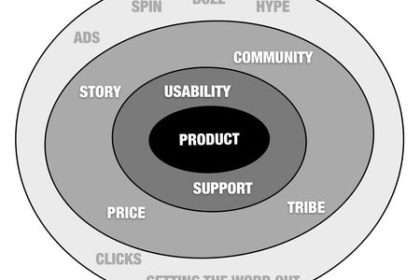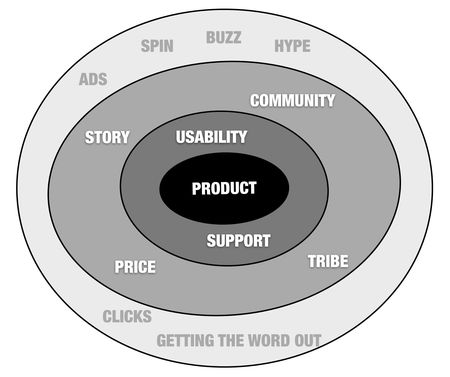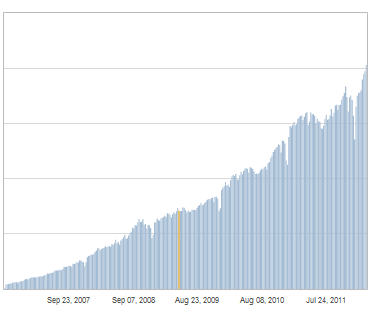
As an SEO, my years and marketing have long been spent trying to convince other marketing professionals, product managers, and executives in a company that the work we do in SEO can not be done in a silo. The success of search engine optimization is DEPENDENT on all other levels of the organization from the way in which the executive team uses social media and their blogs, to the company’s PR strategy, to how the product managers price and promote their products, to the engagement of Sales and Customer Support with the community surrounding the products… Anyone who thinks (or hire someone who thinks) SEO is as simple as keyword optimization and link building is wasting money.
Not long ago, Ed Trevis, the CEO of Corvalent, whom remarkably bucked the troubling habit of entrepreneurs going to Silicon Valley as though being there would help them be more successful (he went the other direction, taking Corvalent from Silicon Valley to Cedar Park, TX where indeed, the location has helped them be more successful), shared with me a brilliantly simply visual to help capture this fact. Seth Godin recently put together a representation of how everything affects the success (or failure) of your marketing programs called the Circles of Marketing.
When in doubt, when your marketing isn’t working, the answer is easy: go one circle in.
Circles of Marketing
 Just spend a minute with the visual to the right; explore the possibilities and the implications of what it might mean. Is the Productan island in a sea of other considerations? How areCommunity and Price considered equal or related in some way??
Just spend a minute with the visual to the right; explore the possibilities and the implications of what it might mean. Is the Productan island in a sea of other considerations? How areCommunity and Price considered equal or related in some way??
Step out to the outermost ring now and consider your own marketing organization or efforts. UNFORTUNATELY, most entrepreneurs, CEOs, executives, and small business owners think this outer ring alone is Marketing. That’s where business fail to scale. That’s where entrepreneurs fail to succeed.
Godin shares, “The next circle in has so much more leverage. This is the circle of telling a story that resonates with a tribe. This is the act of creating alignment, of understanding worldviews, of embracing and elevating the weird. Smart marketers in this circle acknowledge that their product or service isn’t for everyone, but bend over backwards to be sure that some people will be able to fall in love with it.”
Community, Price, your Story, and the Tribe truly and simply determine whether or not your marketing works. Here we’re talking about conversion rates, word of mouth, viral coefficients, and a whole host of other marketing buzzwords that go overlooked by entrepreneurs and executives as the bailiwick of the Marketing organization but seen in this light, perhaps it’s easier to appreciate that those buzzwords usually aren’t in the control of the marketing organization or program – they are terms marketers track and emphasize, but they depend on the product managers, sales, and customer service professionals in your business. As a marketer says to you that we need to improve our conversion rates, entrepreneurs all too often just agree and say, “get to it!”
As such, Support and Usability are all too often ignored as affecting marketing. First, the good news, that’s changing. Good design is increasingly prevalent online as the impact of design is appreciated in the conversion and retention of your users. Support processes and organizations are increasingly tied surveys, metrics like a Net Promoter Score, and expectations that support = revenue. Disappointingly, it isn’t happening quickly enough, with design and quality often relegated by entrepreneurs to a later stage in their strategy.
Ultimately, you’re marketing a product and at the end of the day, that needs to be accountable. “When the thing you sell has communication built in,” adds Godin, “when it is remarkable and worth talking about, when it changes the game–marketing seems a lot easier.”
So how do you apply this simple visual in your organization? Take one step in. When everything else is failing, when a program doesn’t work, when a employee isn’t delivering what you’d expect, take one step in and evaluate what’s at fault there. If I can help, let me know here.



I think you need this quote to make it easy to interpret: “When in doubt, when your marketing isn’t working, the answer is easy: go one circle in.”
& I would add a deeper circle based on frequent conversations w/ founders & respecting the work of Ash Maurya + Running Lean
— from product look inward toward first principles & your assumptions about P/M fit –> then P/S fit –> & generally question your early adopter profile.
I’ve been chewing on the notion that the inner more circle is “Opportunity”
Doesn’t exactly follow the Why, How, What norm, but what I’ve discovered most founders fail to do is uncover how Why is a meaningful opportunity. Market -> Product fit.